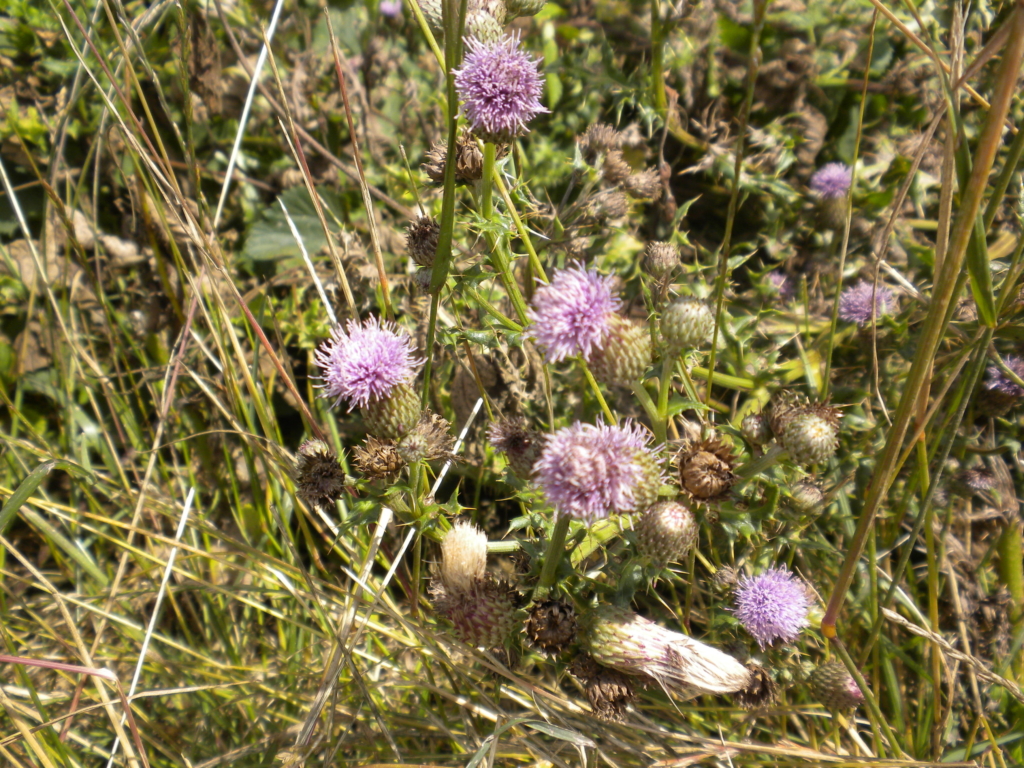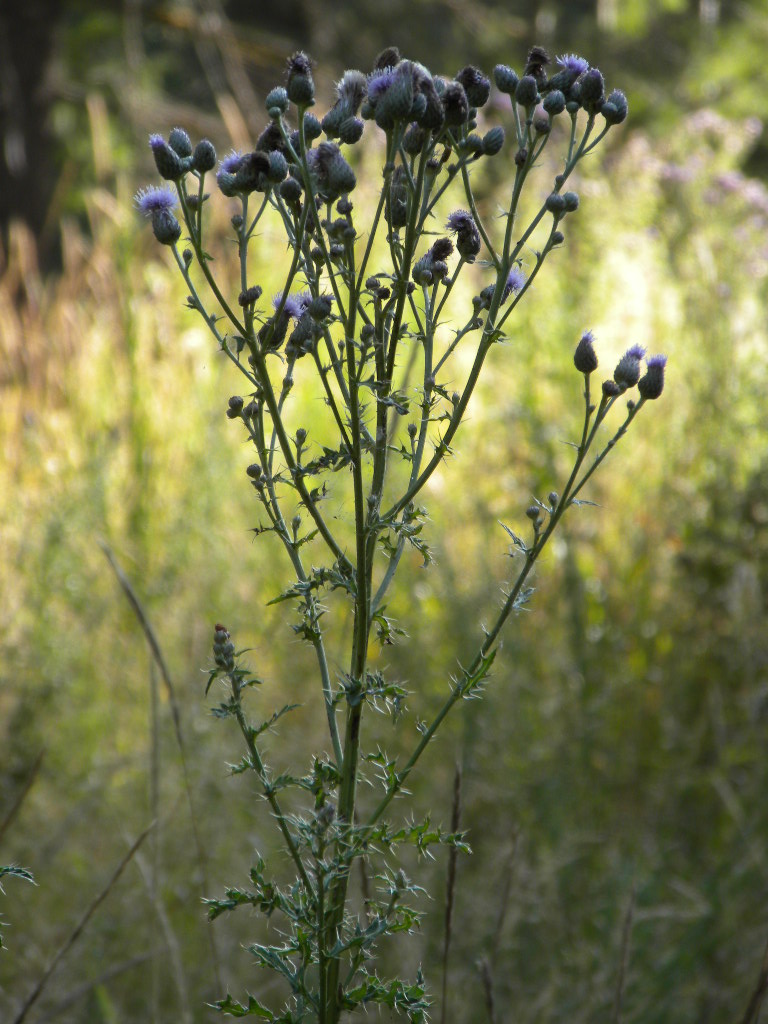Canada Thistle
Cirsium arvense
Plant Description
Flowers are clusters of small, purple heads; flower heads are ½ to ¾ inch in diameter. leaves have wavy margins with prickles along edges; not as hairy as bull thistle. • Plants begin as a rosette and then shoot upright after 2-4 weeks. Stems can be slightly hairy or without hairs.
Plant Details
| Life Forms | |
|---|---|
| Habitats | |
| ODA Listing | |
| Suggested Actions | |
| Shade Preference | |
| Mature Height | 2-5' |
| Distribution | Canada thistle is common in disturbed and overgrazed areas and becomes a dominant species following disturbance. |
| Control | Repeated and frequent pulling or hand-cutting of individual plants may eventually reduce small infestations, but typically hand pulling or digging promotes the growth of rhizomatous plants and is not advised for larger infestations. Mow plants to prevent seed production prior to flowering. Avoid mowing plants in full flower, as cut flowers may still form viable seeds. Mow repeatedly throughout the season to prevent re-flowering. Inhibit thistle growth by planting species that will overshadow the weeds. |
| Disposal Methods | Plants in flower can form viable seeds even after removal, so carefully bag and dispose of all flower heads in sealed plastic bags. |
| Reproduction and Spread | Lateral roots (or rhizomes) grow 3 or more feet deep and spread vigorously. Canada thistle reproduces by both seeds and rhizomes. Emergence occurs in early May, with the plants bolting in mid- to late-June. Plants produce 1,000 seeds on average and may produce up to 5,300 seeds. Seeds are dispersed by the wind. Seeds usually germinate in the spring and fall, but tilling, grazing, and other soil disturbances may cause them to germinate at other times. The seeds remain viable in the soil for over 20 years. Root fragments can grow new plants. |
| Look Alikes | bull thistle, native thistles |
| Impact | This is the only invasive thistle that can spread by rhizomatous roots, making it very difficult to eradicate. May form dense stands in overgrazed pastures, not palatable to livestock and reduces forage potential. Can reduce the growth of tree seedlings. |
| More Info |
© Marion Soil and Water Conservation District. All Rights Reserved.


